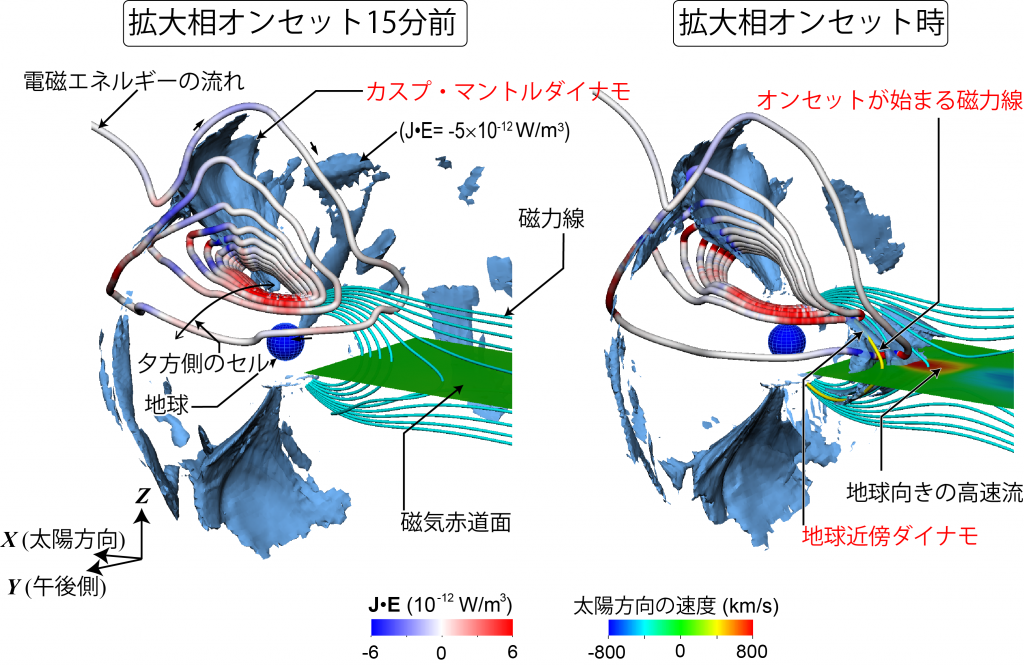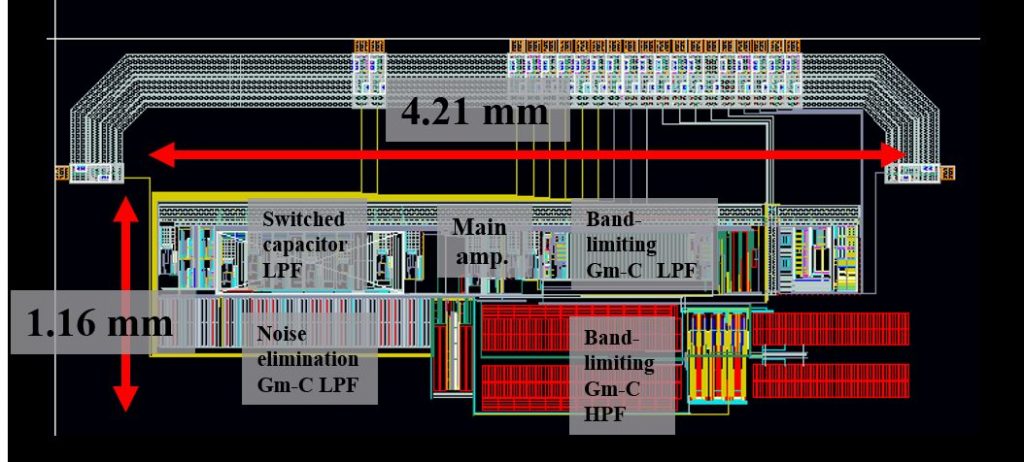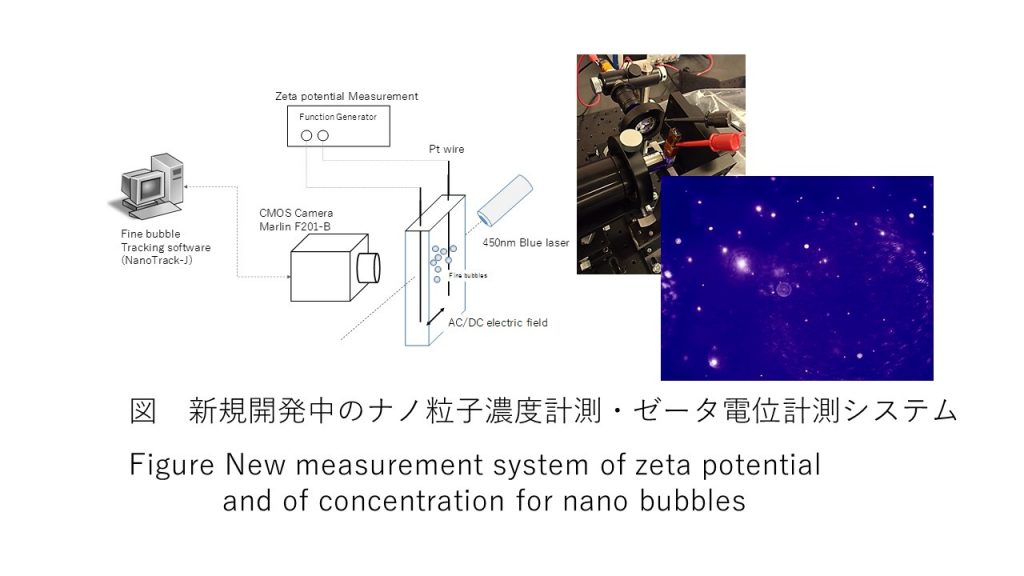2017 Activity Report for Mission 3: Sustainable Space Environments for Humankind
Updated: 2018/06/19
Prize in FY2017
Appleton Prize
Professor Yoshiharu Omura received Appleton Prize, International Union of Radio Science (URSI) for significant contributions to nonlinear wave-particle interaction theory, simulations of chorus and ion cyclotron emissions and the associated acceleration and precipitation of relativistic electrons in the radiation belts.
Nishida Prize
Dr. Yusuke Ebihara received Nishida Prize, Japan Geoscience Union (JpGU) for understanding of magnetospheric dynamics based on large-scale simulations.
Research 1: Space systems for utilization and maintenance of space environment (Hiroshi Yamakawa)
- The electric sail is a new space propulsion system that uses multiple deployed and electrostatically charged wires to change interplanetary solar wind dynamic pressure into thrust force. It was first proposed by P. Janhunen (Journal of Propulsion and Power, 20, 4, 763-764, 2004). A new thrust model for the electric sail using the particle-in-cell method is investigated.
- Geostationary satellites are located in geostationary orbits to keep a constant orbital position relative to the ground track. The charging phenomenon of the geostationary satellites is investigated numerically, and a charging model for geostationary satellites is proposed to evaluate active charging effects.
- In order to prevent near-Earth asteroids from striking the Earth, the conventional concept of a gravity tractor is revisited by adding the Coulomb force effect to increase the asteroid trajectory control effect. This is realized by actively charging both the asteroid and a spacecraft positioned nearby the asteroid.
Publications, etc.
- K. Hoshi, H. Kojima, T. Muranaka, and H. Yamakawa, Thrust Calculation of Electric Solar Wind Sail by Particle-in-cell Simulation, Annales Geophysicae, Vol. 34, pp. 845-855, 2016, doi:10.5194/angeo-34-845-2016.
- K. Hoshi, H. Kojima, and H. Yamakawa, Particle-in-cell Simulation of Potential Structure around Electric Solar Sail Wind Tethers, The 30 ISTS Special Issue of Transaction of JSASS, Aerospace Technology Japan, Vol. 14, No. ists-30, pp. Pb-83-Pb-89, 2016.
- K. Hoshi, Y. Muranaka, H. Kojima, H. Usui, I. Shinohara, and H. Yamakawa, Numerical Analysis of Active Satellite Charging in the Geostationary Environment, Journal of Spacecraft and Rockets, Vol. 53, No. 4, pp. 589-598, 2016.
- K. Yamaguchi and H. Yamakawa, Near Earth Asteroid Deflection Mission Using Coulomb Force Attractor, The 30 ISTS Special Issue of Transactions of JSASS, Aerospace Technology Japan, Vol. 14, No, ists30, doi: 10.2322/tastj.14.Pd_119, 2016.
Research 2: Simulation study on substorms (Yusuke Ebihara)
Using computer simulation, we investigated substorms that disturb severely near-Earth space environment.
Results
When a substorm occurs, colorful, bright aurora starts dancing over the polar region. At the same time, large-amplitude electojet, exceeding a million Amperes, flows at about 100 km altitude, which disturbs geomagnetic field in the polar region. By analyzing the results of computer simulation, we investigated the substorm in terms of the Sun-Earth connection. The bright aurora, called a surge, appears due to the coupling between the upper atmosphere (ionosphere) and the magnetosphere. We also showed the pathway of electromagnetic energy from the solar wind to the Earth. The pathway shown in the simulation appears to be a spiral moving toward the Earth. Just before the substorm onset, the electromagnetic energy is converted to the internal energy, followed by the electromagnetic energy. This conversion is associated with sudden, localized accumulation of plasma. This may explain the reason why the sudden brightening of the aurora starts with localized region.
Research 3: Study on dynamic variation of relativistic electron fluxes in the radiation belts (Yoshiharu Omura)
- We have found that relativistic electrons in the Earth’s radiation belts are generated through nonlinear interaction with whistler-mode chorus emissions and that these electrons are precipitated by EMIC-triggered emissions.
- Nonlinear wave processes are essential, and they are clarified by test particle simulations.
Publications, etc.
- Y. Hsieh and Y. Omura, Nonlinear dynamics of electrons interacting with oblique whistler-mode chorus in the magnetosphere, J. Geophys. Res. Space Physics, 10.1002/2016JA022891, 2017.
- Y. Kubota and Y. Omura, Rapid precipitation of radiation belt electrons induced by EMIC rising-tone emissions localized in longitude inside and outside the plasmapause, J. Geophys. Res. Space Physics, doi: 10.1002/2016JA023267, 2017.
- J. C. Foster, P. J. Erickson, Y. Omura, D. N. Baker, C. A. Kletzing, S. G. Claudepierre, Van Allen probes observations of prompt MeV radiation belt electron acceleration in non-linear interactions with VLF Chorus, J. Geophy. Res. Space Physics, doi: 10.1002/2016JA023429, 2017.
- Y. Katoh and Y. Omura, Electron hybrid code simulation of whistler‑mode chorus generation with real parameters in the Earth’s inner magnetosphere, Earth, Planets and Space, 68, 192, 2016.
Research 4: Development of miniaturized plasma wave instruments for monitoring space electromagnetic environments (Hirotsugu Kojima)
The miniaturization of plasma wave instruments on board satellites and sounding rockets is essential, because required resource to onboard instruments is getting severe these days. In particular, the use of micro/nano-satellites demands further reduction of their resources. Plasma wave instruments have a crucial role in exploring space environments. Since plasma wave instruments consume a lot of resources, they can’t be installed on micro/nano-satellites without some technical breakthrough. The present study has been aiming at this breakthrough by developing an IC chip which is designated to plasma wave instruments. In FY2017, we succeeded in developing a new type spectrum receiver. The new spectrumreceiver installed on a chip with the size of 5mm x 5mm has the capability to change observation frequency bands in time by dynamically changing cutoff frequencies of Low pass filters and sampling frequencies. The new spectrum receiver on the chip allows us to observe wave spectra in the frequency range up to 100kHz with high time and frequency resolutions.
Publication
Zushi, T., H. Kojima, and H. Yamakawa, One-chip analog circuits for a new type of plasma wave receiver on board space missions, Geosci. Instrum. Method. Data Syst. 6, doi: 10.5194/gi-6-159-2017.
Research 5: Application research into new materials for space missions (Yoshikatsu Ueda)
During a survey of application technology, we discovered that water with micro-nano bubbles can be used in sustainable regions.
Publication
Hamamoto, S., N. Nihei, Y. Ueda, P. Moldrup, and T. Nishimura, Effects of Flow Rate and Gas Species on Micro- and Nano-Bubble Transport in Porous Media, Environmental Engineering, 2017 (in press).
Research 6: Microstructural analysis of wood-based, diamond-like carbon for improved resistance against atomic oxygen (Toshimitsu Hata, Hirotsugu Kojima)
Critical and rapid deterioration of the outer surface of a spacecraft is known to occur in low earth orbit (LEO) through interaction with atomic oxygen (AO) in complex space environments. Transmission electron microscopy (TEM) and electron energy-loss spectroscopy (TEM−EELS) revealed a quantitative structural change in wood-based, diamond-like carbon (DLC) during exposure to AO.
Research Activities
- Microstructural analysis of wood-based DLC before and after AO exposure.
- TEM observation of wood-based DLC before and after AO exposure.
- Structural analysis of wood-based DLC before and after AO exposure.





